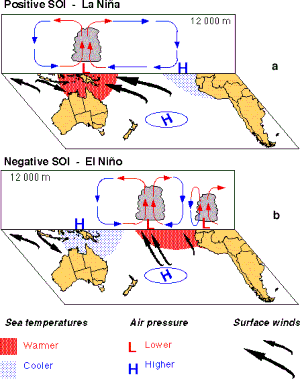Figure 5 - east–west atmospheric circulation along the longitude–height plane over the Equator. The cell over the Pacific Ocean is referred to as the Walker Circulation.
The easterly trade winds are part of the low-level component of the Walker Circulation. Typically, the trade winds bring warm moist air towards the Indonesian region. Here, moving over normally very warm seas, moist air rises to high levels of the atmosphere. The air then travels eastward before sinking over the eastern Pacific Ocean. The rising air is associated with a region of low air pressure, towering cumulonimbus clouds and rain. High pressure and dry conditions accompany the sinking air. Sinking air completes the loop.
During El Niño event, the Walker Circulation and accompanying east–west circulations differ significantly from normal conditions (figure 6a). Rising motions prevailed at almost all longitudes. In particular, strong ascent in the mid-troposphere replaced descending air motion over the central and eastern Pacific, where the water was anomalously warm due to El Niño. The Walker Circulation is weakened and became less organized.
Walker Circulation may even reverse in the more intense episodes of El Niño. In this instance westerly winds are observed over parts of the equatorial western and central Pacific where normally easterly (trade) winds would be expected. Oceans around Australia cool, and slackened trade winds feed less moisture into the region.

